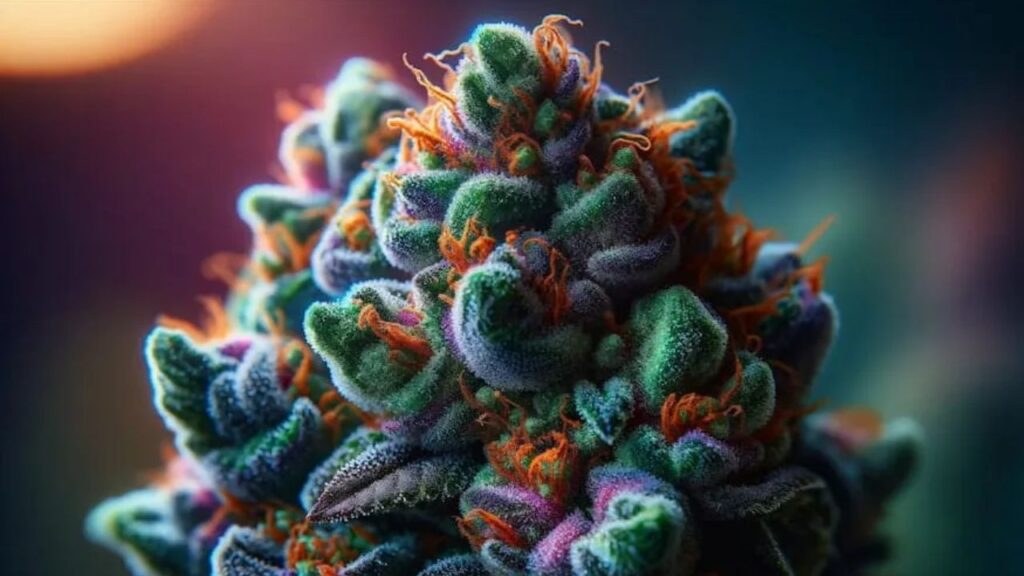Baby Yoda Strain has emerged as a beloved choice among cannabis enthusiasts for its unique characteristics and delightful effects. In this blog post, we’ll explore the top tips for cultivating Baby Yoda Strain, from selecting the right seeds to maximizing yield and quality. Whether you’re a novice grower or a seasoned cultivator, mastering the art of cultivating Baby Yoda Strain can lead to rewarding results and a bountiful harvest. Join us as we delve into the world of Baby Yoda cultivation and uncover the secrets to growing this iconic strain to perfection.
Baby Yoda Strain
Baby Yoda Strain is a popular cannabis variety known for its captivating name and exceptional qualities. Named after the beloved character from the Star Wars universe, this strain has gained a loyal following for its potent effects and unique flavour profile. With its Indica-dominant genetics, Baby Yoda Strain delivers a relaxing and euphoric high that leaves users feeling uplifted and at ease. Characterized by its dense, Buy Blue Tomyz Backpackboyz resinous buds and earthy aroma, Baby Yoda Strain offers a delightful sensory encounter that is appealing to people using it for enjoyment as well as medicine. Baby Yoda Strain never fails to enchant cannabis connoisseurs with its indisputable attractiveness, whether they want to relax after a demanding day or find pain and stress relief.
Leading Advice for Growing Baby Yoda Strain
Growing Baby Yoda Strain may be a fulfilling experience, but it needs to be done correctly and with close attention to detail. optimal results. Here are some top tips for cultivating this beloved strain:
Selecting High-Quality Seeds or Clones:
- Start with reputable sources to ensure genetic stability and desirable traits.
- Choose healthy seeds or vigorous clones with strong roots and vibrant foliage.
Creating Optimal Growing Conditions:
- Maintain a uniform temperature between 70-80°F (21-27°C) during the day and slightly cooler at night.
- Control humidity levels between 40-60% to prevent mold and mildew.
- Provide adequate airflow and ventilation to promote healthy plant growth.
Proper Soil Selection and Nutrient Management:
- Use well-draining soil rich in organic significance with a pH level of 6.0-6.5.
- Start with a balanced nutrient regimen and adjust based on plant response and growth stage.
- Avoid overfeeding or underfeeding, AK-47 Strain as nutrient imbalances can lead to nutrient deficiencies or toxicity.
Vegetative Stage Care:
- Ensure sufficient light exposure (18-24 hours of light per day) to promote vegetative growth.
- Prune and train plants to encourage bushy growth and maximize light penetration.
- Monitor plant health regularly for signs of pests, diseases, or nutrient deficiencies.
Flowering Stage Management:
- Transition plants to the flowering stage by adjusting the light schedule to 12 hours of light and 12 hours of evening.
- Monitor bud development and trichome production to determine harvest readiness.
- Support heavy buds with stakes or trellises to prevent breakage.
Harvesting and Curing:
- Harvest plants when trichomes are cloudy or amber-coloured for the desired effect.
- Trim buds carefully to remove excess leaves and improve appearance.
- Cure harvested buds in a cool, dark place with proper air circulation for 1-2 weeks to enhance flavour and potency.
By following these top tips for cultivating Baby Yoda Strain, Sherbacio growers can achieve successful harvests and enjoy the full potential of this iconic cannabis variety.
Vegetative Stage Care
During the vegetative stage of cultivation, the Baby Yoda Strain requires careful attention to ensure healthy growth and development. super runtz strain Here are some essential tips for caring for your plants during this crucial stage:
Lighting: Use high-quality grow lights to provide your Baby Yoda plants with 18-24 hours of light per day. Ensure consistent light exposure to promote vigorous vegetative growth and prevent stretching.
Temperature and Humidity: Maintain a stable temperature moderately colder at night and between 70 and 80°F (21-27°C) during the day. Keep the relative humidity of your space between 40 and 60% to prevent the growth of mould and mildew.
Specific Nutrient Requirements Give your Baby Yoda plants a well-balanced fertilizer that contains essential elements such as nitrogen, phosphorus, and potassium. Adjust nutrient levels based on plant development and response to prevent overfeeding or underfeeding.
Drinking plenty of water Regular watering will ensure that the soil is evenly damp but not waterlogged for your plants. Allowing the soil to slightly dry out in between waterings will help prevent issues with moisture, such as root rot. being careful not to overfeed or underfeed.
Watering: Water your plants thoroughly, SMOK Priv V8 ensuring that the soil is evenly moist but not waterlogged.to avoid root rot and other moisture-related problems in between waterings.
Prune your baby yoda weed on a regular basis to get rid of any dead or yellowing leaves and promote bushy growth. To regulate plant height and boost productivity, take into consideration applying training methods like topping or low-stress training (LST).
Pest and Disease Management: Keep an eye out for pests like aphids, and spider mites, and Treat any infestations promptly with organic or chemical insecticides to prevent damage to your plants.
By providing proper care and attention during the vegetative stage, you can ensure that your Baby Yoda plants develop strong, healthy foliage and set the stage for a successful flowering period.
Flowering Stage Management
As your baby yoda weed transition into the flowering stage, it’s crucial to provide them with the right conditions and care to ensure robust bud development. Here’s how to manage the flowering stage effectively:
Adjusting Light Schedule: To trigger the flowering process, switch the light schedule to 12 hours of light and 12 hours of darkness. Ensure consistent darkness during the dark period to prevent light pollution and maintain proper flowering hormone production.
Monitoring Bud Development: Monitor your plants closely as they begin to flower. Watch for the formation of dense, resinous buds and the development of trichomes, which indicate the onset of maturity.
Supporting Heavy Buds: As your Baby Yoda plants produce large, heavy buds, provide them with support to prevent branches from bending or breaking under the weight. Use stakes, trellises, or plant cages to support the branches and keep them upright.
Managing Nutrient Levels: Adjust your nutrient regimen to meet your plants’ changing needs during the flowering stage. Increase phosphorus and potassium levels to support flower development while reducing nitrogen to prevent excessive foliage growth.
Maintaining Temperature and Humidity: Continue to monitor temperature and humidity levels during the flowering stage, aiming for temperatures between 65-80°F (18-27°C) and humidity levels between 40-50%. Lower humidity levels in the late flowering stage to prevent mould and mildew.
Pruning and Defoliation: Remove any large fan leaves that block light penetration to the lower buds. This allows more light to reach the lower canopy and encourages bud development. Be cautious not to over-prune, as this can stress the plants.
Harvesting: Harvest your Baby Yoda buds when they reach the desired level of maturity, typically indicated by cloudy or amber-coloured trichomes. Use a magnifying glass or jeweller’s loupe to inspect the trichomes closely and determine the optimal harvest time.
By effectively managing the flowering stage of your baby yoda weed, you can maximize bud development, potency, and yield, resulting in a bountiful harvest of high-quality cannabis.
Harvesting and Curing
Harvesting and curing are crucial steps in the cultivation process that can significantly impact the quality and potency of your Baby Yoda buds. Here’s how to harvest and cure your cannabis effectively:
- Harvesting:
- Harvest your baby yoda weed strain when they reach their peak maturity, typically indicated by cloudy or amber-coloured trichomes.
- Use sharp pruning shears to carefully trim each bud from the plant, taking care not to damage the surrounding foliage.
- Trim away any excess leaves and stems from the buds to improve airflow and enhance appearance.
- Drying:
- Hang your trimmed buds upside down in a cool, dark, and well-ventilated space with a relative humidity of around 50-60%.
- Allow the buds to dry slowly for 7-14 days, red velvet strain depending on humidity levels and environmental conditions.
- Monitor the drying process closely, ensuring that the buds are drying evenly and not becoming too dry or brittle.
- Curing:
- Once your buds are dry, transfer them to airtight glass jars or containers for the curing process.
- Fill the jars with dried buds, leaving some space at the top for air circulation.
- Store the jars in a cool, dark place with a relative humidity of around 60-65%.
- Open the jars once or twice a day to allow fresh air to circulate and release any excess moisture.
- Continue curing your buds for 2-4 weeks, or longer if desired, to enhance flavour, aroma, and potency.
- Testing and Enjoying:
- After the curing process is complete, test your Baby Yoda buds to ensure they are properly cured and ready for consumption.
- Enjoy your freshly cured buds by grinding them up and smoking, vaping, or incorporating them into edibles.
By following these steps for harvesting and curing your Baby Yoda buds, you can preserve their flavour, aroma, and potency while ensuring a smooth and enjoyable smoking experience.
Common Challenges and Solutions
Cultivating baby yoda weed strain can be a rewarding experience, but it’s not without its challenges. Here are some common challenges growers may encounter during the cultivation process and how to address them:
- Pests and Diseases:
- Challenge: Baby Yoda plants are susceptible to pests such as aphids, spider mites, and whiteflies, as well as diseases like powdery mildew and bud rot.
- Solution: Monitor plants regularly for signs of pests and diseases. Use organic or chemical insecticides to treat pest infestations, and employ proper ventilation and humidity control to prevent mould and mildew growth.
- Environmental Factors:
- Challenge: Fluctuations in temperature, humidity, and light can stress Baby Yoda plants and affect their growth and development.
- Solution: Maintain stable environmental conditions by using temperature and humidity controllers, providing adequate airflow and ventilation, pink certz strain and using shading or supplemental lighting as needed.
- Nutrient Imbalances:
- Challenge: Overfeeding or underfeeding Baby Yoda plants can lead to nutrient imbalances, nutrient deficiencies, or nutrient toxicity.
- Solution: Monitor nutrient levels regularly using a pH meter and nutrient solution tester. Adjust nutrient levels as needed based on plant response and growth stage, and flush plants with plain water if nutrient buildup occurs.
- Training and Pruning:
- Challenge: Improper training or pruning techniques can damage Baby Yoda plants and reduce yield.
- Solution: Research and practice proper training and pruning techniques such as topping, low-stress training (LST), and defoliation. Be careful not to overdo it and stress the plants unnecessarily.
- Harvest Timing:
- Challenge: Harvesting baby yoda weed strain at the wrong time can result in immature or overly mature buds with reduced potency or flavour.
- Solution: Monitor trichome development using a magnifying glass or jeweller’s loupe and harvest when trichomes are cloudy or amber-coloured for the desired effect.
By addressing these common challenges with effective solutions, growers can overcome obstacles and cultivate healthy, high-yielding Baby Yoda plants with ease.
Maximizing Yield and Quality
Maximizing the yield and quality of your Baby Yoda Strain requires careful attention to various factors throughout the cultivation process. Here are some tips to help you achieve the best possible results:
Start with Healthy Genetics: Begin with high-quality seeds or clones from reputable sources to ensure genetic stability and desirable traits.
Optimize Growing Conditions: Provide optimal environmental conditions, including proper lighting, temperature, humidity, and airflow, to promote healthy growth and maximize yield potential.
Train and Prune for Business: Use training techniques such as topping, low-stress training (LST), and defoliation to encourage lateral growth and create a bushier canopy, resulting in more flowering sites and increased yield.
Implement Strategic Feeding: Develop a nutrient regimen tailored to the specific needs of your Baby Yoda plants throughout each stage of growth, adjusting nutrient levels as needed to prevent deficiencies or excesses.
Monitor and Manage Pest and Disease Pressure: Regularly inspect your plants for signs of pests, diseases, or nutrient imbalances, and take proactive measures to address any issues promptly to prevent yield loss.
Optimize Harvest Timing: Harvest your baby yoda weed strain at the optimal time, typically when trichomes are cloudy or amber-coloured, to ensure peak potency and flavour while maximizing yield.
Proper Drying and Curing: Dry and cure your harvested buds properly to preserve their terpene profile, potency, and overall quality. Maintain consistent temperature and humidity levels during drying and curing, and monitor closely to prevent mould or over-drying.
Quality Over Quantity: Focus on producing high-quality buds rather than maximizing yield at the expense of potency or flavour. Quality buds will command higher prices and earn you a reputation as a top-tier grower.
By following these tips and implementing best practices throughout the cultivation process, you can maximize both the yield and quality of your Baby Yoda Strain, tropicana cookies strain ensuring a successful and rewarding harvest.
Conclusion
Cultivating Baby Yoda Strain can be a fulfilling endeavour for cannabis enthusiasts seeking to produce high-quality buds with exceptional potency and flavour. By implementing the tips and techniques outlined in this guide, growers can optimize their cultivation practices to maximize yield and quality. From selecting healthy genetics and providing optimal growing conditions to implementing strategic training and pruning techniques, each step of the cultivation process plays a crucial role in determining the final outcome. By focusing on quality over quantity and prioritizing the needs of your plants throughout their growth cycle, you can achieve impressive results and enjoy the fruits of your labour.
Whether you’re a novice grower or a seasoned cultivator, cultivating Baby Yoda Strain offers a unique opportunity to hone your skills, experiment with different techniques, and ultimately produce cannabis of the highest calibre. With dedication, patience, and attention to detail, you can unlock the full potential of this iconic strain and cultivate buds that are truly out of this world.So, roll up your sleeves, get your hands dirty, and embark on a journey of cultivation excellence with Baby Yoda Strain. With a little care and effort, you’ll be rewarded with an abundant harvest of top-shelf cannabis that’s sure to impress even the most discerning connoisseurs. May the force be with you as you cultivate your own little slice of cannabis heaven with Baby Yoda Strain!
FAQ
What are the typical flowering times for Baby Yoda Strain?
Baby Yoda Strain typically flowers for 8 to 10 weeks, depending on the specific phenotype and growing conditions.
How can I prevent mould and mildew when cultivating Baby Yoda?
To prevent mould and mildew when cultivating Baby Yoda Strain, maintain proper ventilation, humidity levels, and airflow, and monitor closely.
What are the best nutrients for feeding Baby Yoda plants?
A balanced fertilizer with essential nutrients like nitrogen, phosphorus, and potassium is the best food for Baby Yoda plants.
Can Baby Yoda Strain be grown indoors and outdoors?
Yes, Baby Yoda Strain can be grown both indoors and outdoors, allowing growers to choose their preferred cultivation environment.
How does Baby Yoda compare to other popular strains in terms of cultivation difficulty?
Baby Yoda Strain is generally considered to have a moderate level of cultivation difficulty, similar to many other popular strains.


